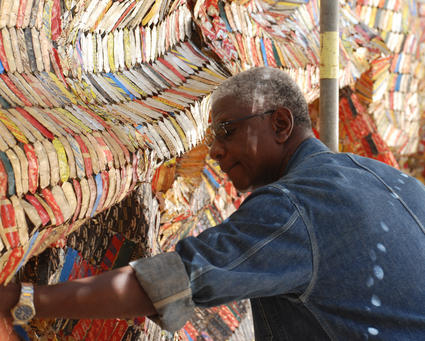UMMA AFTER HOURS

Twice a year, the UMMA stays open late for visitors to explore the artwork After Hours. On Thursday March 14th, the spring celebration of the late night event will take place in the museum. There are a number of exquisite permanent collection pieces, as well as a series of visiting exhibits that are worth checking out by night. If you can’t find time during regular hours, this a great opportunity to get your art fix. In addition to the usual artwork, there will be live music performed by the Ingrid Racine Quartet, playing Jazz and Afro Pop tunes. From the UMMA’s site, After Hours is about:
Standing before the shimmering fields of color created by West African artist El Anatsui in the career retrospective El Anatsui: When I Last Wrote to You About Africa, taking a walk around London with the Queen of England’s guards in Francis Alÿs’s video work Guards, traveling to the Himalayas with Buddhist Thangkas and Treasures: The Walter Koelz Collection, Museum of Anthropology, and finding out what an architect does with Alice in Wonderland and Andy Warhol’s dessert recipes in Florencia Pita/FP mod. The
After Hours runs from 7-10 pm. Click here for more info. And for more updates about happenings at UMMA and around campus, check out the blog The Annex. See you there!







